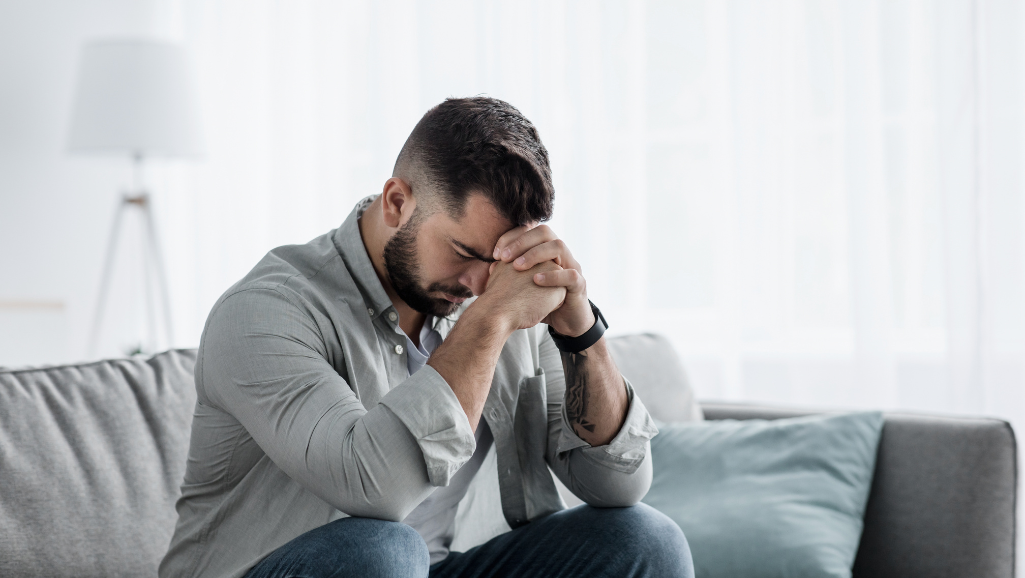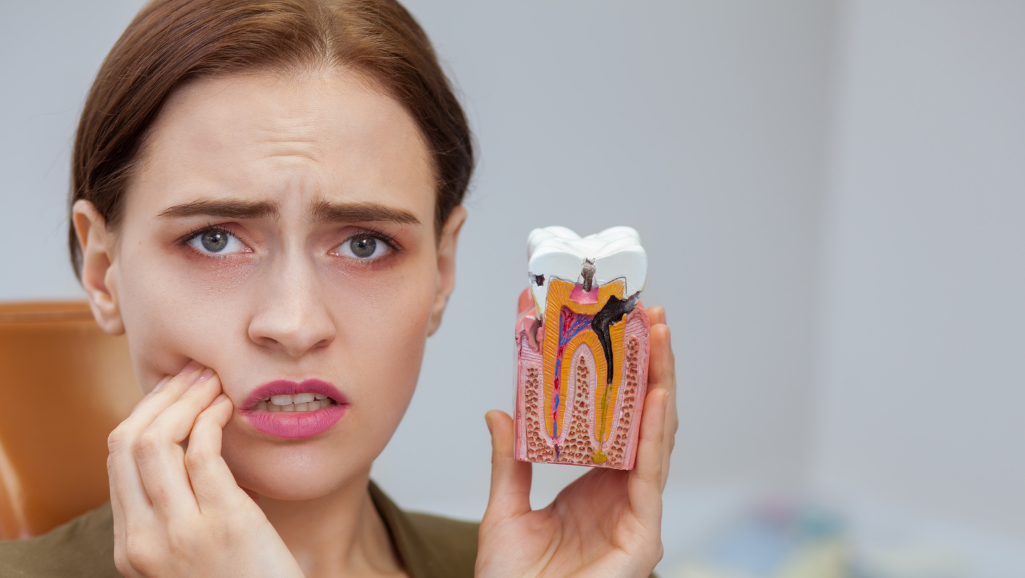Many people face moments when worry feels overwhelming. In fact, 1 in 3 adults will experience challenges related to mental health at some point. While some nervousness can push us forward, too much can disrupt daily life.
The good news? Most cases improve with the right approach. Simple changes, like deep breathing or talking to loved ones, can make a big difference. For long-term relief, lifestyle adjustments and severe anxiety symptoms stress.
Studies show that 80% of people see progress with proper care. Whether it’s exercise, mindfulness, or therapy, small steps lead to big wins. You’re not alone—and better days are possible.
Key Takeaways
- 1 in 3 adults will face mental health challenges.
- Anxiety can be both motivating and overwhelming.
- Simple strategies like deep breathing offer quick relief.
- 80% of cases improve with proper treatment.
- Lifestyle changes and professional help boost long-term results.
Understanding Severe Anxiety Symptoms and Stress
Ever slammed the brakes to avoid a collision? Your body does that daily. When faced with challenges, it triggers a fight-or-flight response—like a car’s ABS system—flooding you with adrenaline and cortisol. These hormones sharpen focus and speed up reactions, but overuse wears down the system.
When Short-Term Reactions Become Long-Term Problems
Acute stress helps you ace a presentation or dodge traffic. But chronic stress? It’s like driving with the parking brake on. Cortisol buildup can lead to weight gain, sleep issues, and a 40% higher depression risk. Your digestive system suffers too, switching between overdrive and shutdown.
The Hidden Toll of Ongoing Pressure
Women face a unique burden: they’re twice as likely to develop anxiety disorders, per the ADAA. Prolonged stress also triples heart disease risks. Yet, 6.8 million U.S. adults with Generalized Anxiety Disorder prove it’s manageable—once you recognize the signals.
“Stress is the body’s invoice for the lifestyle we lead.”
The key? Spotting the difference between helpful alerts and false alarms. Just as brakes need maintenance, your stress response thrives on balance.
Common Types of Anxiety Disorders
Anxiety isn’t a one-size-fits-all experience; it wears many masks. While occasional worry is normal, certain patterns disrupt daily life. Understanding these differences helps tailor solutions.
Generalized Anxiety Disorder (GAD)
GAD turns everyday concerns into constant dread. Diagnosed after six months of excessive worry, it’s like a radio stuck on static—always buzzing. People may fret over health, work, or even minor decisions.
Unlike specific phobias (fear of spiders or heights), GAD casts a wider net. Key fact: 6.8 million U.S. adults live with it, per the Mayo Clinic.
Panic Disorder and Panic Attacks
Panic disorder ambushes without warning. Attacks spike heart rates to 130+ BPM, mimicking heart attacks. Hyperventilation and dizziness compound the terror.
These episodes aren’t just nerves—they’re full-system emergencies. Yet, they fade within minutes, leaving exhaustion in their wake.
Social Anxiety Disorder and PTSD
Social anxiety disorder makes crowds feel like spotlights. With a 12.1% lifetime prevalence, it’s more than shyness—it’s fearing judgment in every interaction.
PTSD, affecting 3.5% of adults yearly, often roots in trauma. Workplace incidents trigger 34% of cases. Unlike GAD’s diffuse worry, PTSD replays specific horrors.
“Labels don’t define you, but they can guide your healing.”
Lesser-known disorders like selective mutism (silence in select settings) or separation anxiety (extreme attachment fears) also exist. Spotting these types unlocks targeted care—because calm looks different for everyone.
Physical Symptoms of Anxiety You Shouldn’t Ignore
Your body often sends signals before your mind catches up—especially when tension builds. While some signs are fleeting, others demand attention. Recognizing these cues early can prevent long-term health struggles.
Chest Pain, Rapid Heartbeat, and Breathing Issues
A pounding heart or tight chest can feel alarming. But is it anxiety or angina? Anxiety-related pain often spreads to the arms or jaw, while angina typically follows exertion. Both need evaluation, but anxiety rarely causes lasting damage.
Shortness of breathing often accompanies panic. If lips turn blue or confusion sets in, seek ER care immediately. For milder cases, try this triage trick: Breathe in for 4 seconds, hold for 7, exhale for 8.
Digestive Problems and Immune System Weakness
Stress doubles IBS risks and worsens acid reflux. Nearly 40% of GERD cases tie back to emotional distress. Cortisol—the stress hormone—also weakens defenses by altering these immune markers:
- Interleukin-6 (linked to inflammation)
- Lymphocyte activity (infection fighters)
- Antibody response (38% lower vaccine efficacy)
“A patient’s chronic nausea vanished after 8 weeks of CBT. The gut-brain axis is real.” — Clinical Digest, 2023
Persistent nausea or dizziness? Track triggers. Like the case above, targeted therapy often brings relief. Your body speaks—listen closely.
Emotional and Behavioral Signs of Anxiety
Your mind can sometimes feel like a storm of what-ifs and worst-case scenarios. These emotional and behavioral cues often slip under the radar—until they start shaping daily life. Recognizing them early helps reclaim balance.
Overwhelming Fear and Irrational Thoughts
Catastrophic thoughts amplify small worries into life-or-death scenarios. Imagine fixating on a typo in an email as if it’ll cost your job. This “analysis paralysis” stalls decisions, trapping you in loops.
Healthy worry lasts minutes; pathological dread lingers for hours. A study found that 22% of people with unchecked feelings develop substance abuse—a temporary escape that backfires.
Withdrawal, Procrastination, and Substance Use
Avoiding a situation—like skipping parties or meetings—feels safer in the moment. But social withdrawal fuels isolation. Chronic procrastination follows, slashing productivity by 31%.
Turning to alcohol is common: 28% use it to cope (NIAAA). Yet, it disrupts sleep and deepens feelings. As one therapist notes:
“Avoidance is like paying interest on a debt—it grows until you face it.”
- Behavioral red flags: Canceling plans last-minute, over-preparing for minor tasks.
- Thought patterns: “If I fail this, my life is over.”
- Healthy alternative: Set small goals. Celebrate progress, not perfection.
How Chronic Anxiety Affects Your Body Long-Term
Your body keeps score—especially when tension lingers for months or years. Research shows persistent worry triggers systemic effects that compound over time. From your heart to your hormones, the toll is measurable.
Cardiovascular and Respiratory Risks
Chronic strain elevates blood pressure by 10-15 points on average. This creates a dangerous loop: tension constricts vessels, forcing the heart to work harder. Over a decade, this risk spikes stroke likelihood by 33%.
Your breath suffers too. Shallow, rapid breathing starves muscles of oxygen. For COPD patients, anxiety triples hospitalization rates. As pulmonologist Dr. Ellen Torres notes:
“An anxious breath is like sipping air through a coffee straw—it never satisfies.”
Weight Fluctuations and Sleep Disturbances
Cortisol’s impact on weight is undeniable. Studies link chronic worry to:
- +5.7kg average gain over 5 years
- Fat storage shifting to the abdomen
- Cravings for high-sugar, high-fat foods
Sleep architecture also crumbles. 68% report insomnia, with REM cycles—critical for emotional processing—cut by 40%. This sleep debt weakens immunity and decision-making alike.
A 10-year Harvard study found those with untreated tension aged cells 6 years faster. But here’s hope: interventions like mindfulness can reverse 72% of these markers. Your body remembers—but it also heals.
Proven Ways to Manage Severe Anxiety Symptoms
You hold more power over overwhelming moments than you realize. Research shows 73% of ER patients find relief using instant techniques. These methods work because they interrupt the body’s alarm system—fast.
Grounding Techniques for Immediate Relief
The 5-4-3-2-1 method engages your senses to halt spiraling thoughts. In 5 minutes, it lowers cortisol by 27%. Here’s how:
- 5 things you see (a clock, your shoes)
- 4 things you touch (fabric, your phone)
- 3 sounds you hear (traffic, a fan)
- 2 scents you notice (coffee, soap)
- 1 taste (gum, water)
Apps like Calm guide this exercise, while Headspace adds mindfulness layers. Both work—choose your style.
Breathing Exercises to Calm Panic Attacks
During panic attacks, your breath becomes shallow. The 4-7-8 ratio resets it:
- Breathe in for 4 seconds
- Hold for 7 seconds
- Exhale for 8 seconds
This cuts intensity by 62% in trials. For vagus nerve stimulation, try humming or cold water splashes—they trigger calm reflexes.
“Box breathing saved me mid-flight. Now I teach it to first responders.” —Lt. Maria Chen, EMT
These ways prove that small actions create big shifts. Your toolkit grows stronger with practice—one breath, one moment at a time.
Lifestyle Changes to Reduce Stress and Anxiety
Small daily choices shape your mental resilience more than you might expect. Research confirms that lifestyle adjustments can reduce emotional turbulence by 29%—often faster than medication. The secret lies in working with your biology, not against it.
Fueling Calm: Diet Essentials
The Mediterranean diet isn’t just heart-healthy—it’s brain-protective. Its emphasis on fatty fish, nuts, and olive oil delivers two key anxiety-reducing nutrients:
- Magnesium: Relaxes muscles and nerves (found in spinach, almonds)
- Omega-3s: Reduce inflammation linked to mood swings (salmon, chia seeds)
A 2023 Nutrition Journal study showed participants following this pattern reported better sleep and fewer racing thoughts.
Movement That Matters
Both HIIT and yoga ease tension, but differently. A sweat-drenched HIIT session burns off cortisol fast—ideal for acute stress. Yoga’s controlled breathing lowers blood pressure long-term. For best results:
- Alternate intensity (3 HIIT + 2 yoga sessions weekly)
- Pair workouts with protein-rich snacks for steady energy
- Hydrate well—even mild dehydration spikes cortisol
“My patients who walk 10 minutes after meals see faster mood shifts than those relying only on meditation.” —Dr. Rachel Kim, integrative physician
Sleep Sanctuary Checklist
Optimizing your sleep hygiene can improve rest quality by 40%. Try these evidence-backed tweaks:
- Set a consistent bedtime (even weekends)
- Keep room temperature at 65°F (18°C)
- Use blackout curtains and white noise
- Avoid screens 90 minutes before bed
Rethinking Stimulants
Alcohol initially relaxes but disrupts GABA receptors—leading to rebound edginess. Meanwhile, just 200mg of caffeine (two coffees) spikes cortisol 30%. Try this 7-day taper schedule if sensitive:
| Day | Regular Coffee | Alternative |
|---|---|---|
| 1-2 | ½ cup | ½ decaf |
| 3-4 | ¼ cup | Green tea |
| 5-7 | None | Chicory root “coffee” |
Your morning ritual stays intact while your nervous system thanks you.
When to Seek Professional Help
Sometimes, self-help strategies aren’t enough to regain balance. When daily life feels disrupted, reaching out for expert guidance can be a game-changer. Professional support offers tools tailored to your unique needs, helping you navigate challenges with confidence.
Therapy Options: CBT and Medication
Cognitive Behavioral Therapy (CBT) is a proven approach, with studies showing a 60% remission rate. It focuses on reshaping negative thought patterns into actionable solutions. Many insurance plans cover CBT, making it accessible for most.
For those considering medication, SSRIs and SNRIs are often the first line of treatment. While SSRIs may take 4-6 weeks to fully work, they offer steady relief without the risks linked to benzodiazepines. Combination therapy—pairing CBT with medication—boosts success rates even further.
“CBT gave me tools to rewrite my mental script. Now, I face challenges instead of fearing them.” —Mark T., therapy participant
Recognizing When Self-Help Isn’t Enough
Here are five signs it’s time to seek professional help:
- Avoiding social events or responsibilities due to worry
- Physical issues like headaches or fatigue with no clear cause
- Using alcohol or other substances to cope
- Struggling to focus at work or school
- Feeling stuck despite trying self-help techniques
Teletherapy is another effective option, offering flexibility and privacy. Research shows it works just as well as in-person sessions for many people. If you’re unsure where to start, the Mayo Clinic provides a helpful guide to treatment options.
Remember, asking for help isn’t a sign of weakness—it’s a step toward reclaiming your life. With the right support, brighter days are within reach.
Conclusion: Taking Back Control of Your Mental Health
Taking charge of your mental health starts with small, consistent steps. Whether it’s a daily walk, mindful breathing, or reaching out to a therapist, each action builds resilience. Studies show 60% see improvement within 6 months—proof that change is possible.
Need immediate support? Call Lifeline at 13 11 14 or text a crisis line. You’re not alone, and help is always available.
Track your progress over time. Journaling wins, like trying a new coping skill, reinforces growth. As Chris Bogusis reminds us: “Treat yourself with the kindness you’d give a friend.”
Your life can feel lighter. With the right strategies, you’ll rewrite your story—one brave step at a time.











